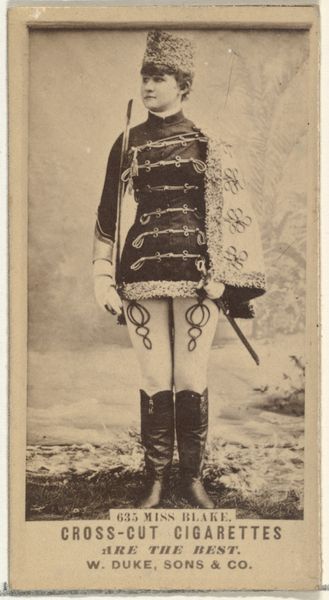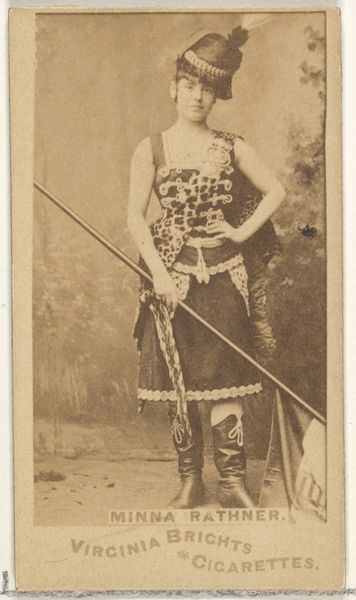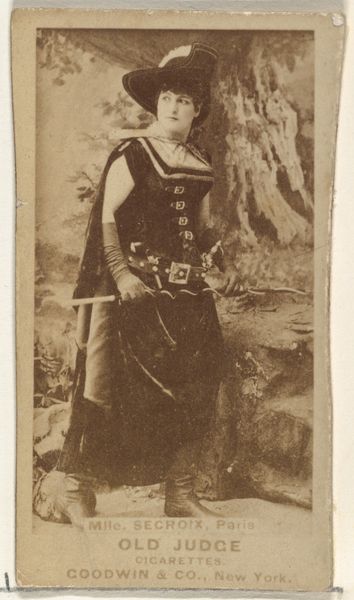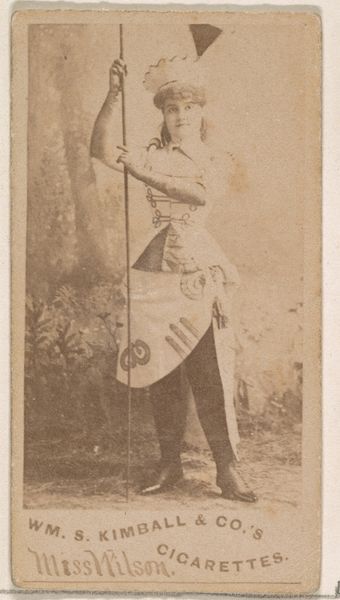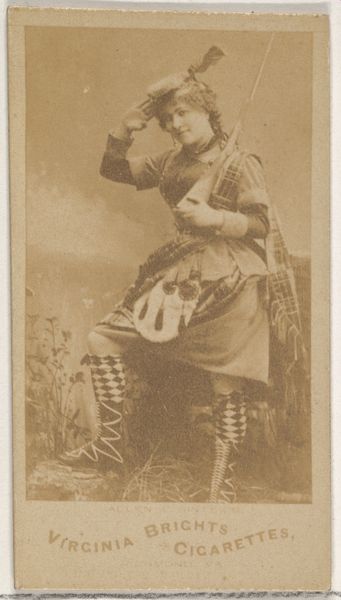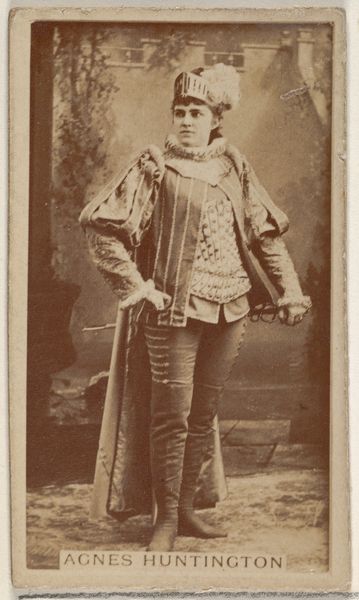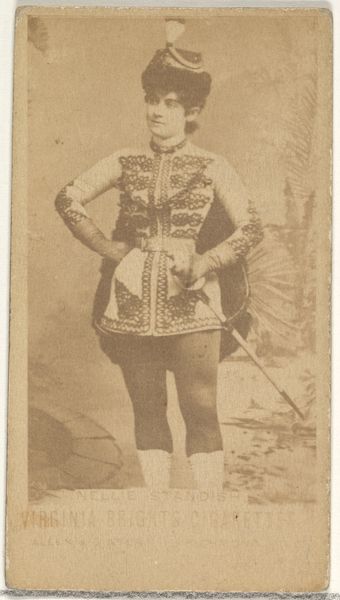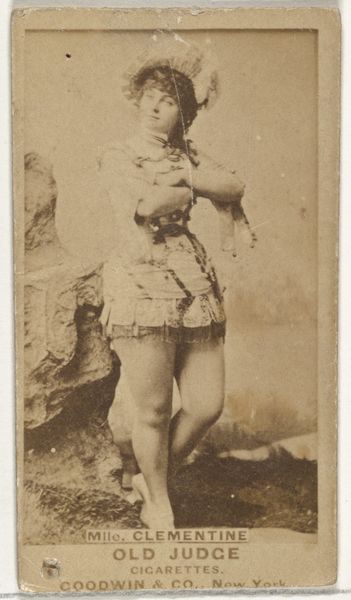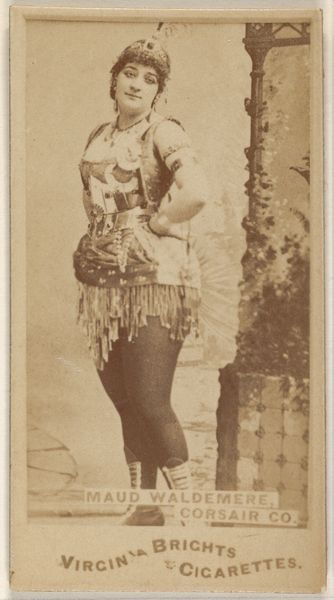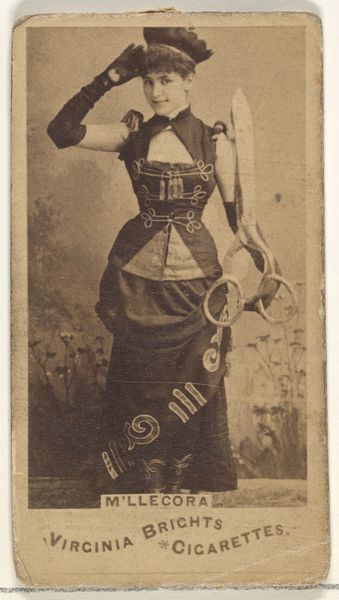
Card 755, Seven Ravens, from the Actors and Actresses series (N45, Type 2) for Virginia Brights Cigarettes 1885 - 1891
0:00
0:00
drawing, graphic-art, coloured-pencil, print, etching, photography
#
portrait
#
drawing
#
graphic-art
#
coloured-pencil
# print
#
etching
#
photography
#
coloured pencil
Dimensions: Sheet: 2 3/4 x 1 3/8 in. (7 x 3.5 cm)
Copyright: Public Domain
Editor: Here we have "Card 755, Seven Ravens," a trade card created by Allen & Ginter sometime between 1885 and 1891, part of their Actors and Actresses series for Virginia Brights Cigarettes. It's a fascinating piece, rendered with coloured pencils, etching, photography, and other graphic arts. What strikes me most is the almost staged presentation; the figure seems to be more about selling an idea than representing a real person. How do you see this work? Curator: Absolutely. Let’s look at it through a material lens. The very nature of this piece – a promotional card distributed with cigarettes – positions art squarely within the realm of consumerism. We need to think about the labour involved, both artistic and industrial. What were the conditions under which these cards were produced? What were the economic drivers for creating and distributing images of actresses this way? The layering of print, photography and etching asks questions about the process of image-making itself. Editor: That's an interesting way to put it – considering the labor and production. Does the figure’s costume itself contribute to that consumerist reading? Curator: Precisely. The theatrical costume, shield, and weapon create a spectacle designed to capture attention and, ultimately, sell a product. The material signifiers – what kind of cloth is that drape? How are those details of that sword manufactured? – become prompts. Who were the consumers and what message did these specific materials transmit to the emerging consumer culture of the late 19th century? It's less about "high art" and more about the mechanics of desire and the industrial processes used to spark that desire. Editor: So, in looking at the material and process, we can unpack a whole social and economic context! I hadn’t thought about it in that way before. Curator: Indeed. By understanding how the object was made, distributed, and consumed, we gain insights into the culture that produced it. It challenges traditional art historical narratives focused solely on aesthetics and individual genius.
Comments
No comments
Be the first to comment and join the conversation on the ultimate creative platform.

